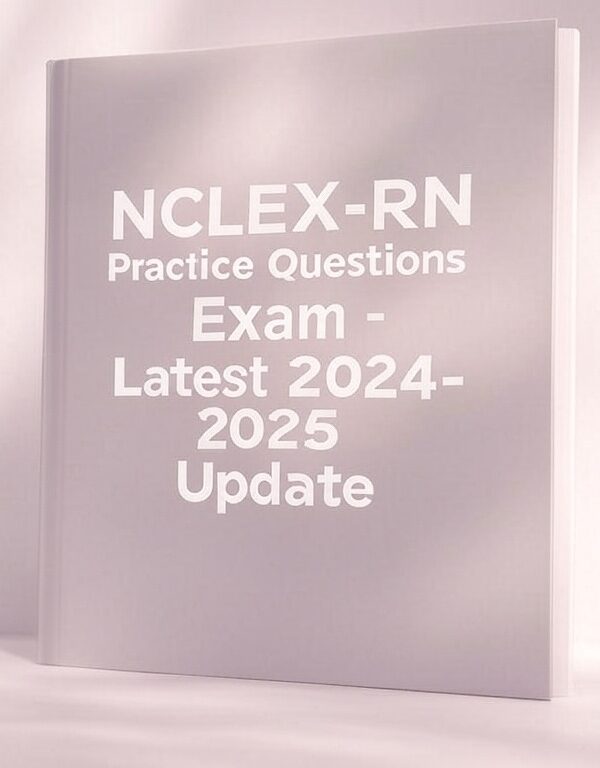-
60 High-Quality Questions: Reflects the latest 2025 exam content for targeted preparation.
-
Comprehensive Rationales: In-depth explanations to clarify concepts and improve retention.
-
Core Maternal-Newborn Topics: Focuses on critical areas of maternal and neonatal nursing.
-
Exam-Focused Design: Structured to mirror the ATI proctored exam format.
-
Efficient Study Tool: Ideal for quick, effective review and practice.
Boost your confidence and pass the exam with this essential study companion.
Preview
A nurse is teaching a new parent about newborn safety. Which of the following instructions
should the nurse include in the teaching? – – correct ans- -A. “You can share your room with
your baby for the next few weeks.”
B. “Cover your baby with a light blanket while sleeping.”
C. “Check the temperature of your baby’s bath water with your hand.”
D. “Your baby can nap in the car seat during the daytime.”
Answer: “You can share your room with your baby for the next few weeks.”
A. “You can share your room with your baby for the next few weeks.”
The nurse should recommend room-sharing during the first few weeks. This allows the
parent to be readily available to the newborn and learn the newborn’s cues. However, the
nurse should instruct the parent to avoid placing the newborn in their bed as it increases
the risk for sudden infant death syndrome.
B. “Cover your baby with a light blanket while sleeping.”
The nurse should instruct the parents to place the newborn in a sleep sack or a one-piece
sleeper. Covering the newborn with a blanket or quilt increases the risk for sudden infant
death syndrome.
C. “Check the temperature of your baby’s bath water with your hand.”
The nurse should instruct the parents to check the temperature of the newborn’s bath
water with their elbow, which is more sensitive to temperature than the hand. The hot water
heater should be set at or below 49° C (120.2° F) to prevent burns.
D. “Your baby can nap in the car seat during the daytime.”
The nurse should instruct the parents to lay the newborn in a bassinet or crib on her back to
sleep. Sleeping in a supine position on a firm mattress decreases the risk of sudden infant
death syndrome.
A nurse is caring for a client who is in labor and whose fetus is in the right occiput posterior
position. The client is dilated to 8 cm and reports back pain. Which of the following actions
should the nurse take? – – correct ans- -A. Apply sacral counterpressure.
B. Perform transcutaneous electrical nerve stimulation (TENS).
C. Initiate slow-paced breathing.
D. Assist with biofeedback.
Answer: Apply sacral counterpressure.
A. Apply sacral counterpressure.
The nurse should apply sacral counterpressure to assist in relieving back labor pain related
to fetal posterior position.
B. Perform transcutaneous electrical nerve stimulation (TENS).
The nurse should perform TENS during the first stage of labor.
C. Initiate slow-paced breathing.
The nurse should transition a client to pattern-paced breathing during this stage of labor.
D. Assist with biofeedback.
The nurse should teach the client about biofeedback during the prenatal period for it to be
effective during labor.












Reviews
There are no reviews yet.